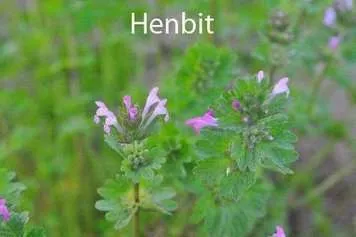K-State horticulture expert says fall is usually best time for managing weeds
MANHATTAN, Kan. – Purple and white flowers growing in the garden could be a good thing. Those same colors growing in your lawn…well, that’s not so good.
“The plant with the little purple flowers that have been showing up in home lawns is called henbit,” said Ward Upham, a horticulture expert at Kansas State University. “The plant that is also low growing but has round stems and white flowers is chickweed.”
Henbit and chickweed are winter annuals that begin growing in the fall, but detract from the beauty of a lush, green lawn. By the time they flower in the spring, it’s likely too late to kill either with a herbicide.
“Though the plants may be burned back, they will rarely be killed,” Upham said. “However, remember that these are winter annuals, so they will die as soon as the weather turns hot. Keep the lawn mowed until nature takes its course.”
For now, the best course of action for eliminating henbit and chickweed is to mark the calendar for October when you can spray with such products as 2,4-D, Weed-B-Gon, Weed Free Zone, Weed out or Trimec.
“You may also use a pre-emergent herbicide for lawns in late September as long as you have not recently put down grass seed,” Upham said.
Homeowners who sprayed for henbit or chickweed last fall can also spot treat this spring, if some plants are still active. “Spray with herbicides early in the spring before henbit and chickweed have put on much growth,” Upham said.
Upham and his colleagues in K-State’s Department of Horticulture and Natural Resources produce a weekly Horticulture Newsletter with tips for maintaining home landscapes. The newsletter is available to view online or can be delivered by email each week.
Interested persons can also send their garden- and yard-related questions to Upham at [email protected], or contact your local K-State Research and Extension office.
FOR PRINT PUBLICATIONS: Links used in this story
K-State Horticulture Newsletter, https://hnr.k-state.edu/extension/info-center/newsletters/index.html
K-State Research and Extension local offices, www.ksre.k-state.edu/about/stateandareamaps.html
K State Research and Extension is a short name for the Kansas State University Agricultural Experiment Station and Cooperative Extension Service, a program designed to generate and distribute useful knowledge for the well being of Kansans. Supported by county, state, federal and private funds, the program has county extension offices, experiment fields, area extension offices and regional research centers statewide. Its headquarters is on the K State campus in Manhattan. For more information, visit www.ksre.ksu.edu. K-State Research and Extension is an equal opportunity provider and employer.
Story by:
Pat Melgares
785-532-1160
[email protected]
For more information:
Ward Upham
785-532-6173
[email protected]





